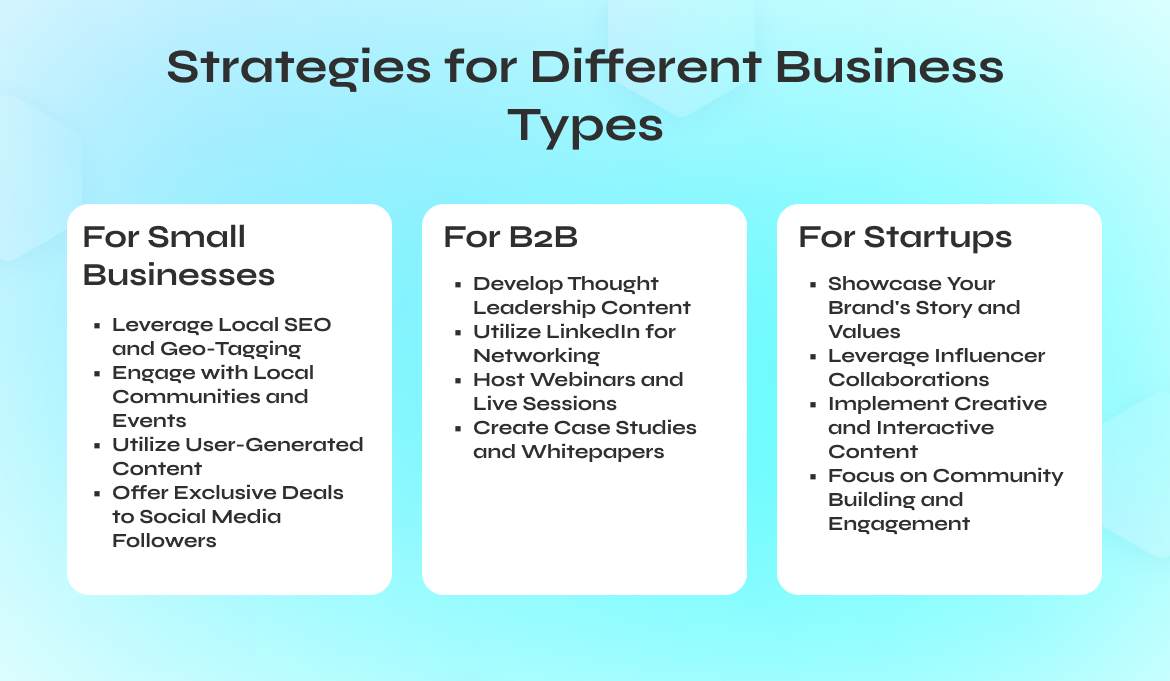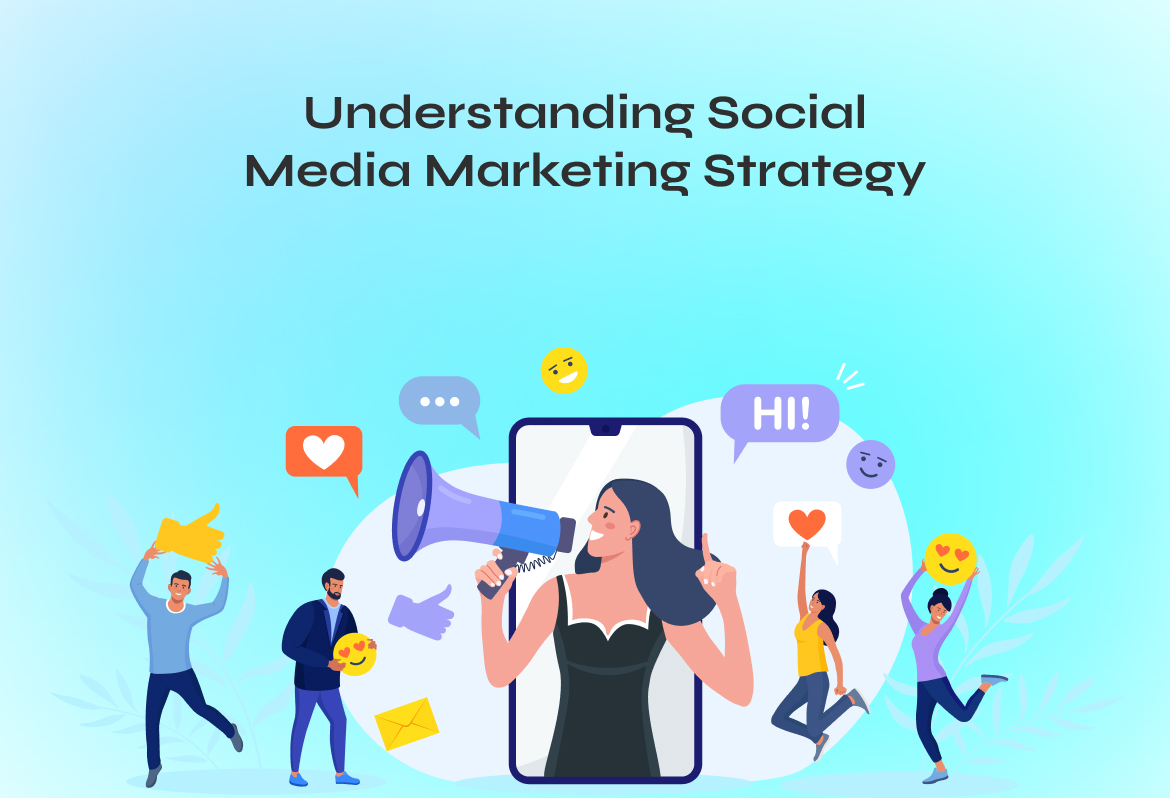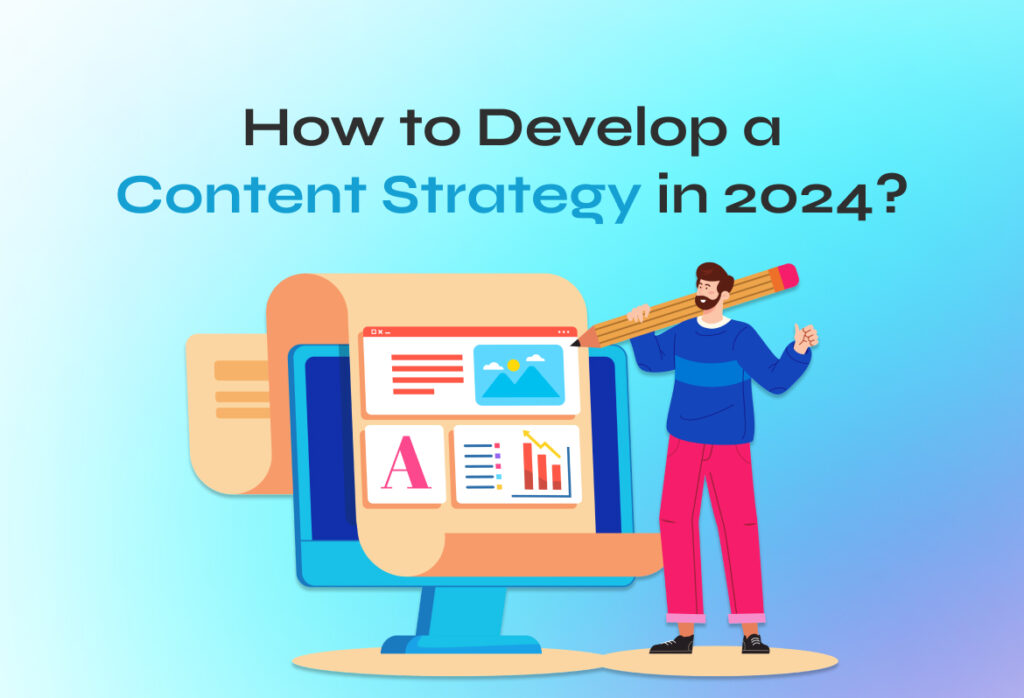Social media marketing strategy has become a pivotal component of a comprehensive marketing plan. It’s a roadmap designed to navigate the complexities of engaging with potential and existing customers on social media platforms. This strategy is more than just posting content regularly; it involves a nuanced approach to interacting with your audience, sharing valuable content, and building a community around your brand.
Social media marketing strategies are crucial for aligning social media activities with business goals. These strategies ensure that every post, reply, like, and comment serves a purpose, whether it’s to increase brand awareness, drive website traffic, or boost sales. The essence of a social media marketing strategy lies in its ability to foster a two-way conversation between a brand and its audience, providing valuable insights into consumer preferences and behaviors.
The Building Blocks of a Successful Strategy

To develop a successful social media marketing strategy, several foundational elements need to be in place:
Setting Clear Objectives
The cornerstone of any successful social media marketing strategy is the establishment of clear, measurable objectives. These goals should be aligned with your overall business strategy and can range from increasing brand awareness to driving sales or fostering community engagement. Setting SMART goals—specific, measurable, achievable, relevant, and time-bound—provides a framework that guides your social media activities and helps measure success. For example, instead of aiming to “increase brand awareness,” a SMART goal would be “to increase followers on our Facebook page by 15% within the next three months.”
Understanding Your Audience
A deep understanding of your target audience is essential for creating content that resonates and engages. This involves more than just demographics; it requires insights into their behaviors, preferences, challenges, and motivations. Developing detailed audience personas can help personalize your approach, ensuring that your messaging and content are relevant and appealing. Consider conducting surveys, monitoring social media conversations, and analyzing engagement data to refine your understanding of your audience’s needs and preferences.
Choosing the Right Platforms
Not all social media platforms are created equal, and not all will be suitable for your business. The choice of platforms should be driven by where your target audience is most active and the nature of your content. For instance, visually driven brands may find more success on Instagram or Pinterest, while B2B companies might prioritize LinkedIn for their professional network. Assess each platform’s demographics, user behavior, and content formats to determine where your efforts will be most effective.
Content Strategy
Your content strategy is the backbone of your social media marketing efforts. It should encompass not only what you post but how you engage with your audience. Content should be varied and valuable, including a mix of educational, informational, and entertaining posts tailored to your audience’s interests and needs. Additionally, planning your content calendar in advance can help maintain a consistent posting schedule and ensure your social media presence aligns with key business events, holidays, and promotions.
Engagement Tactics
Engagement is a two-way street. Beyond posting content, it’s crucial to interact with your audience through comments, messages, and social listening. Engagement tactics should aim to foster a community around your brand, encouraging user-generated content, feedback, and discussions. This active participation helps humanize your brand and builds stronger relationships with your followers.
Analytics and Adaptation
Effective social media marketing requires ongoing analysis and adaptation. Leveraging analytics tools provided by social media platforms can give insights into the performance of your content, audience growth, and engagement trends. Use this data to understand what’s working, identify areas for improvement, and refine your strategy accordingly. This might mean adjusting your content mix, posting schedule, or engagement tactics based on audience feedback and performance metrics.
Integration with Broader Marketing Efforts
Your social media strategy should not exist in a vacuum; it needs to be integrated with your broader marketing and business strategies. This includes aligning messages across channels, leveraging social media to support larger campaigns, and ensuring that all marketing efforts work synergistically towards common business goals.
By focusing on these building blocks, businesses can develop a comprehensive and effective social media marketing strategy that not only reaches but engages their target audience, driving meaningful results.
Strategies for Different Business Types

Each business type has unique needs and challenges when it comes to social media marketing. Here’s how different businesses can tailor their strategies:
Social Media Marketing Strategy For Small Business
Small businesses often operate with limited resources, making it crucial to maximize the impact of their social media marketing efforts. The key is to focus on strategies that foster community engagement and drive local visibility:
- Leverage Local SEO and Geo-Tagging: Use local keywords and geo-tags in your posts to increase visibility among local audiences. This can help your business appear in local search results and attract nearby customers.
- Engage with Local Communities and Events: Participate in discussions related to local events, holidays, or causes. Engaging with local community groups and supporting local events can increase your brand’s presence and relatability.
- Utilize User-Generated Content: Encourage your customers to share their experiences with your brand. Reposting user-generated content not only provides authentic endorsements but also saves resources on content creation.
- Offer Exclusive Deals to Social Media Followers: Create special offers or discounts exclusive to your social media followers. This not only rewards engagement but also encourages new followers and repeat business.
Social Media Marketing Strategy For B2B
B2B companies must navigate longer sales cycles and a niche target audience. Social media can be a powerful tool for establishing thought leadership and nurturing professional relationships:
- Develop Thought Leadership Content: Share industry insights, research findings, and expert opinions to establish your brand as a thought leader. This can help build trust and credibility with your professional audience.
- Utilize LinkedIn for Networking: LinkedIn is a critical platform for B2B businesses. Use it to connect with industry peers, participate in relevant groups, and share content that showcases your expertise.
- Host Webinars and Live Sessions: Offering educational webinars or live Q&A sessions can engage your audience and provide valuable insights, positioning your brand as helpful and knowledgeable.
- Create Case Studies and Whitepapers: Share detailed case studies and whitepapers that demonstrate your solutions’ effectiveness in addressing industry-specific problems. This content can be highly effective in nurturing leads and supporting the sales process.
Social Media Marketing Strategy For Startups
Startups need to build brand awareness and differentiate themselves in a crowded market. Innovative and engaging social media strategies can help startups capture attention and build a loyal following:
- Showcase Your Brand’s Story and Values: Share your startup’s journey, milestones, and the values that drive your business. This can help create an emotional connection with your audience and differentiate your brand.
- Leverage Influencer Collaborations: Partner with influencers who align with your brand’s values and audience. Influencer collaborations can increase visibility and lend credibility to your brand.
- Implement Creative and Interactive Content: Utilize formats like polls, quizzes, and interactive stories to engage your audience actively. Creative content can help your brand stand out and encourage shares and virality.
- Focus on Community Building and Engagement: Foster a sense of community by actively engaging with your audience, responding to comments, and encouraging dialogue. Building a community can help create loyal brand advocates who will promote your brand organically.
By adopting strategies tailored to their specific business type, companies can more effectively utilize social media to achieve their marketing objectives. Small businesses can harness their local appeal, B2B companies can establish industry authority, and startups can build brand awareness and community, each leveraging the unique opportunities provided by social media to drive growth and engagement.
Implementing Your Strategy
This phase is crucial because it translates strategic planning into tangible results, focusing on content creation, scheduling, automation, engagement, and community building.
Content Creation and Curation
A dynamic content strategy is at the heart of social media success. Here’s how to approach it:
- Develop a Content Mix: Your content should be a mix of promotional, educational, and entertaining to engage your audience effectively. This blend keeps your feed fresh and interesting.
- Create a Content Calendar: Plan your content using a calendar. This helps ensure a consistent posting schedule, covers all important dates and campaigns, and allows for strategic thematic content distribution.
- Embrace Multimedia: Use a variety of formats such as images, videos, infographics, and live streams. Multimedia content tends to have higher engagement rates than text-only posts.
- Curate Quality Content: In addition to creating original content, curate relevant and valuable content from other sources. This can provide additional value to your audience and position your brand as an industry leader.
Scheduling and Automation
Efficiently managing your social media presence can save time and resources:
- Use Scheduling Tools: Tools like Buffer, Hootsuite, or Sprout Social allow you to schedule posts across multiple platforms. This helps maintain a consistent online presence without needing to post in real-time.
- Automate Repetitive Tasks: Automate tasks where possible, such as post-scheduling, but maintain a balance to ensure personalization and authenticity in your engagement efforts.
Engagement and Community Building
Engagement is the essence of social media. Here’s how to foster meaningful interactions:
- Prompt Responses: Actively monitor your social media channels to respond promptly to comments, questions, and messages. This shows your audience that you value their input and engagement.
- Encourage User-Generated Content: Create campaigns or hashtags that encourage your audience to share their own content related to your brand. This not only boosts engagement but also provides you with content to share.
- Host Live Sessions: Live Q&A sessions, webinars, or behind-the-scenes tours can deepen your connection with your audience. These live interactions add a human touch to your brand and provide immediate engagement opportunities.
- Create Interactive Content: Polls, quizzes, and contests can drive interaction and make your audience feel like they’re part of your community.
Monitoring and Adjusting Your Strategy

Implementing your strategy is not a set-and-forget process. Continuous monitoring and adaptation are key:
- Track Performance: Use analytics tools to monitor the performance of your posts and campaigns. Look at engagement rates, follower growth, and conversion metrics to gauge what’s working.
- Gather Feedback: Listen to what your audience is saying about your brand on social media. Feedback, whether positive or negative, is invaluable for making adjustments to your strategy.
- Adjust Based on Insights: Use the data and feedback you collect to refine your strategy. This might involve tweaking your content calendar, experimenting with new content formats, or shifting focus to different platforms.
Implementing a social media marketing strategy requires thoughtful planning, creativity, and adaptability. By focusing on content creation, scheduling, engagement, and continuous learning from analytics, businesses can build a strong social media presence that supports their overall marketing goals. It’s a dynamic process that evolves with your audience’s preferences and the changing social media landscape, ensuring that your brand remains relevant and engaging over time.
Conclusion
Crafting a social media marketing strategy is a critical step for businesses aiming to enhance their online presence and engage with their audience more effectively. By setting clear objectives, understanding your audience, choosing the right platforms, and continuously refining your approach, you can develop a strategy that not only meets your business goals but also resonates with your target audience. Start building your social media marketing strategy today, and unlock the potential to transform your brand’s digital footprint.
This comprehensive guide provides a roadmap for businesses of all types to develop and implement an effective social media marketing strategy. By following these steps and adapting the strategy to fit your unique business needs and goals, you can leverage social media to grow your brand and connect with your audience in meaningful ways.





